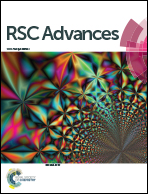A metabolomic study for chronic heart failure patients based on a dried blood spot mass spectrometry approach
Abstract
Objective: a dried blood spot (DBS) method integrated with direct infusion mass spectrometry (MS) focused on a metabolomic analysis was applied to detect and compare the difference of metabolites between the heart failure (HF) patients and non-HF patients in order to facilitate the early detection of heart failures, provide targeted intervention and offer prognostic insights. Methods: the method we used was an untargeted metabolic approach. The dry blood spot mass spectrometry (DBS) was used to analyze 23 types of amino acids and 26 types of carnitine in blood samples. In the current study, 49 metabolites were selected to establish the PLS-DA model to compare the differences between the 117 HF patients and 118 non-HF patients, which inclined to detect the difference between the two groups. Multiple algorithms were run for selecting different metabolites as potential biomarkers. Ten-fold cross validation method was used to verify and evaluate the selected potential biomarkers. Results: through significant analysis of the microarrays (SAM) and analysis of 9 parameters, 8 metabolites showed significant discrepancies between the HF and non-HF groups. Among these metabolites, the levels of 5 metabolites were increased, and the other 3 metabolites were decreased in the HF group compared with the non-HF group. However, 7 metabolites including Asn, C0, C14, C4DC, C5-OH, C6 and Glu were selected to distinguish the HF group from the non-HF group with specificity and sensitivity of 0.8475 and 0.8974, respectively. Conclusion: metabolomic study for chronic heart failure (CHF) patients based on the dried blood spot mass spectrometry approach would be beneficial to understand the metabolic pathway of HF, and probably work as biomarkers to predict the prognosis of HF and provide the basis for an individualized treatment.



 Please wait while we load your content...
Please wait while we load your content...